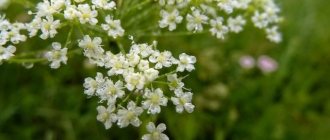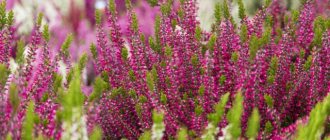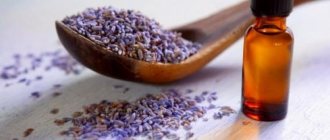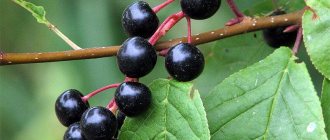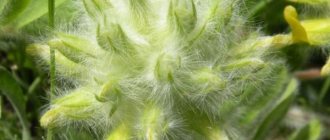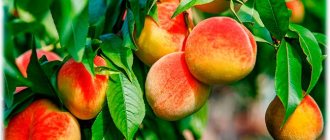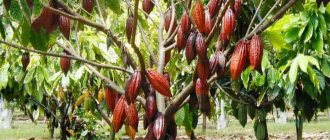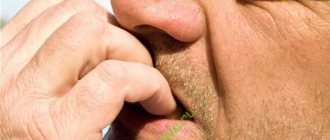Sushenitsa - medicinal properties and contraindications
Traditional medicine prefers natural herbs to most pharmacological drugs for good reason. Many plants have many beneficial properties. A striking example is cudweed, the medicinal properties, indications and contraindications for the use of which will be discussed in the article. This inconspicuous plant is more effective than many medications. And unlike the latter, it does not harm the body at all.
Medicinal properties of the herb
Sushenitsa is a small plant belonging to the Asteraceae family. She lives only one year. The size of a cucumber bush can vary from 5 to 20 centimeters. This most ordinary-looking plant contains many useful substances:
- essential oils;
- tannins;
- flavonoids;
- alkaloids;
- thiamine;
- phytosterols;
- resins;
- fatty substances;
- vitamins of groups B and C;
- carotene.
It is thanks to its rich and varied composition that the plant can be used to treat various diseases.
The main medicinal property of cucumber is anti-inflammatory. Very often, antibacterial agents prepared from the plant are used to treat wounds and burns. As part of some drugs, cucumber can have an astringent or sedative effect.
Marsh cudweed also has other medicinal properties:
- promotes vasodilation;
- produces an analgesic effect;
- enhances intestinal motility;
- accelerates blood clotting;
- has a calming property;
- stimulates the restoration of damaged skin;
- reduces blood pressure;
- has a choleretic effect;
- slows down the rate of heart contraction.
Contraindications to the use of marsh and swamp dried grass
This plant is considered completely harmless. Almost everyone is allowed to use medicines based on cucumber. And yet there are several categories of patients for whom it is advisable to refuse treatment with this plant:
It is not recommended to use cudweed in patients with bradycardia. For hypotension, plant-based medications should be used with extreme caution. A long course of treatment with cudweed can harm people suffering from vegetative-vascular dystonia of the hypotonic type.
If you have no contraindications to the use of cucumber, you can take note of several healing recipes:
- An infusion of dried dried herbs with thyme, violets, pine buds and plantain helps with pneumonia (one or two spoons of each component). You should take this remedy four times a day, half a glass.
- Cushion tincture helps with hypertension. To prepare, add a glass of alcohol to a tablespoon of the dry mixture. The product should be infused for a week. You need to drink half a teaspoon two to four times a day. It is advisable to do this before eating.
- A special oil can be prepared to treat burns and wounds. The crushed dry dried cucumber should be poured with heated vegetable oil. Leave the medicine for 12 hours, and then heat it in a water bath for 30 minutes. Apply the finished product to the wound twice or thrice a day.
- An infusion of dried cucumber with valerian, lily of the valley leaves and hawthorn berries is used to prevent diseases of the cardiovascular system.
- St. John's wort, cudweed and centaury, poured with boiling water and left warm for an hour, turn into an excellent remedy for heartburn and abdominal pain.
- You can prepare a relaxing and soothing bath using dried dried fruit. To do this you will need 150 g of dry grass and 3 liters of boiling water.
Oil for babies
It is recommended that infants prepare oil based on dried cucumber at home. The product will effectively cope with diathesis, small pimples, and diaper rash. The main condition is to use the oil only with the permission of the pediatrician.
Article for you:
Medicinal properties of motherwort herb and its use in folk medicine
Use only fresh plant materials in preparation (you will need 10 grams). Finely chop the grass along with the flowers, rub it a little with your hands, and leave to let out the juice.
Place olive oil (100 ml) in a water bath and heat it up. Pour the vegetable mass with warm oily liquid, put it back into the water bath, and simmer for 15 minutes.
Strain the oil, store tightly sealed in the refrigerator, and leave for half an hour at room temperature before using. Treat delicate baby skin carefully - soak a soft cloth with an oily liquid and wipe the affected area of the dermis.
Procedures should be carried out for children 1-2 times a day; it is advisable to first cleanse the skin with warm water (do not use detergents - there is a risk of irritating the dermis).
Forms of medicines based on cudweed
- Infusion (on water).
You will need 20 g. herbs and 0.5 liters of boiling water. Simmer in a water bath for about 10 minutes, then tightly close the container with a lid and leave for 3 hours. Strain and store in a dark and cool place. This tincture is important to use to increase immunity, if you need to eliminate the inflammatory process, or improve the functioning of the cardiovascular system. - Infusion (with vodka).
To prepare such a tincture, you will need fresh herbs - it must be infused in a 70% alcohol solution for a week. One part of herb will require 10 parts of alcohol. It is recommended to use for high blood pressure at the initial stage, diseases of the gastrointestinal tract. A diluted alcohol tincture can be used to treat wounds, as well as the skin in places where disinfection is required. - Extract.
You can buy cucumber in this form at the pharmacy - it is used externally to treat skin diseases; even during the Second World War, cucumber extract was used to treat gangrene - very successfully. It is prepared as follows: fresh grass is soaked in alcohol infusion - 40%, then it must be kept for 12 hours. After the specified time, the herb is removed from the alcohol and transferred to a container with vegetable oil - it should simmer in a water bath for 24 hours. Naturally, it is almost impossible to prepare such an extract on your own, so experts recommend purchasing the product in pharmacies - it is called “Anti-ulcerin”. - Oil.
You can make it at home - this will require 200 ml of any vegetable oil, preheated well, mixed with 20 grams. dried grass. It can be used for trophic ulcers that are difficult to treat, for cuts, wounds and other damage to the epidermis. The substances that make up this herb promote rapid tissue regeneration.
Plant-based forms of medicines
Medicines based on herbs can take a variety of forms. It all depends on what disease needs to be treated and what method is most suitable.
It is possible to make some forms yourself:
- oil;
- alcohol tincture;
- water tincture;
- extract;
- ointment;
- alcohol-oil tincture;
- decoction;
- bath.
Oil
To make an oil mold you will need:
- dried dried fruit, 1 tbsp. l.;
- flax or olive oil, 10 tbsp. l.
Method of use:
- The plant must be filled with oil and put in a dark place.
- The infusion period is 10 days. Depending on its importance, the oil can be used after a day.
The medicinal properties of cudweed do not disappear in oil - The affected area is lubricated with this composition and a bandage is applied on top.
Alcohol tincture
To make an alcohol tincture you will need:
- fresh dried dried fruit, 1 part;
- alcohol 70%, 10 parts.
Step-by-step instruction:
- The healing plant must be filled with alcohol and left for 7 days.
- You should consume 0.5 tsp. no more than 4 times during the day.
Water tincture
To make a water infusion you will need:
- toad grass, finely chopped, no more than 20 g;
- liquid, 400 ml.
Method of use:
- The plant should be filled with very hot water and steamed in a steam bath for 5 minutes.
- Leave to infuse for 2 hours.
- It is recommended to use the infusion at 0.5 tbsp. up to 3 times throughout the day.
Extract
To make the extract you will need:
- toad grass, fresh;
- alcohol 40%.
Step-by-step instruction:
- The medicinal plant must be chopped into large pieces.
- Pour in alcohol and leave for 12 hours.
- After a while, transfer the raw materials into a cauldron with vegetable oil and leave to infuse in a steam bath for 24 hours.
- Press under pressure.
Ointment
To make ointment you will need:
- toad grass, finely chopped, 1 tbsp. l.;
- butter, 1 tbsp. l.;
- bee nectar, 1 tbsp. l.
Method of use:
- All ingredients must be mixed.
- Leave to infuse in a warm room for 3 days.
- After a while, the ointment can be used.
Alcohol-oil tincture
To make an alcohol-oil tincture you need:
- chopped toad grass;
- alcohol 40%;
- vegetable oil.
Step-by-step instruction:
- The main ingredient must be placed in a glass jar and filled with alcohol.
- Leave to infuse for 12 hours in a warm room, shake from time to time.
- Add vegetable oil and heat in a steam bath.
- Squeeze and filter.
- Seal tightly and store in a dark and cool place.
Decoction
To make a decoction you will need:
- toad grass, 2 tbsp. l.;
- water, 500 ml.
Method of use:
- The plant is filled with boiling water and cooked in a steam bath for 10 minutes.
- After removing from heat, cover with a towel.
- Leave to brew for 2 hours.
- Filter and seal the jar tightly.
- Decoction up to 4 tbsp. l consumed before eating.
Bath
To make a bath you will need:
- toad grass, 1 tbsp. l.;
- liquid, 1 l.
Cooking technique:
- The plant is filled with boiling water and left for 2 hours.
- Filter and add to the bath while taking a bath.
- The procedure should last at least 30 minutes.
To make foot baths you will need:
- dry plant, 2 tbsp. l.;
- water, 1 l.
The method of use is the same as for a regular bath, only before expressing the infusion must be heated to 40 degrees. You need to take a foot bath until the broth cools down.
Application of marsh cudweed
Collecting dried berries for stomach ulcers.
You need to take 4 teaspoons of cucumber, 1 teaspoon of chamomile flowers and 4 teaspoons of blue cyanosis roots. Then take 1 teaspoon of our mixture and pour a glass of boiling water. Then we pour everything into a thermos and leave it in it for three hours. After three hours, the collection must be filtered. Take the medicine for severe pain three times a day, 1 tablespoon. The medicine must be taken 20 minutes before meals.
Collecting dried cucumbers for pneumonia.
Ingredients: 1 teaspoon cudweed, 2 teaspoons violet herb and 2 teaspoons pine buds. You also need to add 1.5 teaspoons of plantain leaves and 2 teaspoons of thyme herb. After all our components have been added, they must be thoroughly mixed. Then take 1 teaspoon of the prepared mixture and pour 200 ml of boiling water over it, leave it warm for half an hour. The collection is taken 4 times a day, 50 ml warm.
Cushion decoction for varicose veins for bathing.
To do this, take 100 grams of dried dried fruit and pour it into a container with 5 liters of water, then bring it to a boil and immediately remove it from the heat and let it brew for 10 hours. Now add the broth to a bath of water and take a bath for 30 minutes, while the water temperature should be in the range of 32-37 °C.
Collection for heartburn and abdominal pain.
Take 1/3 teaspoon each of bogwort, St. John's wort and centaury. Pour this mixture into 0.5 liters of water and place in a warm place for 1 hour. We take the infusion three times a day, 70 ml.
Cider oil for burns.
To do this, you need to grind dry cucumber herb and add vegetable oil in the proportion of 10 g of cucumber and 100 ml of oil. Before adding oil, it must be heated to 60 °C. After we have poured the oil into the cucumber, we let it sit for 12 hours. The infused oil is heated in a water bath for 30 minutes. Then the oil must be filtered. The strained oil is ready to be applied to burns, which are applied three times a day. This oil has healing properties for lubricating wounds, boils and ulcers.
Collecting dried cucumbers for the treatment of gastritis with high acidity.
This collection contains many different herbs.
Take 4 teaspoons of dried cucumber and the same amount of plantain. Then add 1.5 teaspoons of yarrow, 2 teaspoons of centaury and knotweed to them, and also add 1 teaspoon of calamus roots, 1 teaspoon of mint leaves and 0.5 teaspoon of cumin fruits. Now you need to take 1 teaspoon of this mixture and pour a glass of boiling water. Leave the medicine in a thermos overnight. Then filter the broth and take 100 ml 4 times a day after meals.
Cider decoction. You need to take 2 tablespoons of dried dried fruit and pour boiling water in a volume of 150 ml. Then put our composition on low heat for 5 minutes. Then wrap the broth in a towel or something else and leave for 2 hours. After 2 hours, the broth must be filtered. Take a glass 3 times a day. The decoction can be used to improve immunity, to strengthen heart contractions, and for inflammation.
Collection for insomnia. Take 1 teaspoon of cucumber, 1 teaspoon of motherwort, 1 teaspoon of yarrow, 1/3 teaspoon of valerian root. Take 1 teaspoon of our mixture and pour 200 ml of boiling water, then leave it in a warm place for 6 hours. The finished collection must be taken three times a day, 150 ml. The course of treatment should be from 3 to 3.5 weeks.
Use in folk medicine
The herb marsh cudweed (or in other words - swamp) has an incredible number of medicinal properties, and, importantly, has no contraindications for use - it is even prescribed to pregnant and lactating women.
- For skin damage - both non-healing ulcers and minor scratches, oil helps: heat 0.2 liters of vegetable oil, add 20 g of herb into it and leave for 12 hours. Then simmer in a water bath for 20 minutes. Let cool. Lubricate the damaged areas twice a day until recovery.
- For the treatment of hypertension: 2 des. l. place the dried berries in 0.2 liters of boiled water. Cover with a lid and let sit for half an hour. Drink 2 tbsp. l. before eating. Keep the composition in the refrigerator for no more than 2 days.
Combination recipes are also used for hypertension:
- Mix cudweed, horsetail and sweet clover in a ratio of 3:4:4. 1 tbsp. l. steam in 0.2 liters of boiling water for 3 hours. Use 1 tbsp three times a day. l.
- Mix motherwort and dried herbs, valerian root, viburnum fruits and mint leaves in equal parts. 1 tbsp. l. steam the collection in 0.2 liters of boiling water and wait 40 minutes. Drink in 3 doses throughout the day.
- For burns and frostbite, ointment has an excellent analgesic and regenerating effect: mix thoroughly 4 tbsp. l. good quality butter and honey, add 1 tbsp. l. herbs. Use 3-5 times a day.
- For varicose veins, baths with a decoction are useful: add 100 g of raw material to 3 liters of boiling water and keep on low heat for 20 minutes. Infusion time – 10 hours. Take a bath with this medicine for half an hour, 3 times a week.
- To strengthen the immune system: heat 2 tbsp in a water bath for 10 minutes. l. raw materials in 0.2 liters of water. Then place the broth in a thermos for 8-12 hours. Drink in several doses throughout the day. Repeat for 3-5 days.
- In case of prolapse of hemorrhoids or weeping eczema, the affected areas are sprinkled with powdered grass.
- For stomatitis and gingitis, use rinses: 1 tbsp. l. steam the raw materials with 0.2 liters of boiling water, wait 2 hours.
- To eliminate painful sensations from cystitis: steam the herb, put it in a linen bag, apply a compress to the lower abdomen before going to bed.
- In the treatment of ulcers and uterine erosion, douching is used: 1 tbsp. l. place the raw materials in 0.3 liters of boiling water and boil for 20 minutes, turning on the minimum heat. Wrap it up and wait half an hour. Douching is carried out with a warm decoction 1-2 times a day.
- For thrombophlebitis and thrombosis, it is recommended to make local foot baths: 5 liters of boiling water will require 0.25 kg of raw materials. Infusion time is half an hour. Keep your feet in the infusion for half an hour.
- Ulcers of the stomach and duodenum are treated with infusion: 6 tbsp. l. place the dried berries in 0.5 liters of water and heat in a water bath for 20 minutes. After waiting 45 minutes, filter and add water to the initial volume, stir with 5 tbsp. l. honey Drink a third of a glass after meals.
Contraindications for use
There are no categorical contraindications for taking medications with toad grass. However, this does not mean that you can take them haphazardly or unlimitedly. Particular caution should be observed in the presence of bradycardia, vegetative-vascular dystonia, and hypotension.
What does marshweed look like and where does it grow?
Marsh grass is an annual, greenish-gray plant of the Asteraceae family, up to 25 cm high, densely covered with patchy white felt. The root is taproot, thin, weakly branched. The stem is branched from the base, with outstretched lower branches. The leaves are alternate, linear-oblong, petiolate, 1-5 cm long and 1.5-5 mm wide. The flowers are small, bisexual, brownish-yellowish, tubular in small ovoid or hemispherical baskets, clustered in 3-10 dense bunches at the ends of the branches. The fruits are very small, greenish-gray, oblong achenes with a tuft. Blooms in June - August.
Look what the marsh grass looks like in these photos:
The plant is distributed in almost all regions of the European part of Russia. Marsh grass grows where it is damp: on the banks of reservoirs, along ditches and along wet roadsides. You can find it as a weed in vegetable gardens, orchards and fields. It is especially common on wet winter crops, mainly rye.
Swamp dry grass: medicinal properties of the plant and its composition
The composition of dried dried fruit is very rich in various useful microelements and vitamins. In fact, this is why it is often used to treat many diseases. True, this herb has not yet been thoroughly studied, but it has been proven that it contains: essential oils, B vitamins, flavonoids, tannins, carotene, alkaloids, ascorbic acid and some trace elements (for example, copper and iron).
What medicinal properties does dried cucumber have?
- Due to its composition, the plant can have anti-inflammatory, antibacterial and astringent effects;
- Accelerates healing of wounds and scratches, promotes healing of burns and ulcers;
- Dilates blood vessels, has the ability to lower blood pressure;
- Calms the nervous system and slows down the heart rate;
- Helps normalize the functioning of the stomach and intestines, relieves heartburn and heaviness in the stomach;
- Treats cystitis and other inflammatory diseases of the urinary system;
- Can be used to treat cervical erosion, thrush and other gynecological diseases;
- Has a pronounced analgesic effect.
Thus, marsh cudweed can be used for hypertension, nervous excitability and insomnia, angina pectoris, vascular spasms, varicose veins, gastritis, stomach ulcers, intestinal, external and uterine bleeding, hemorrhoids.
A decoction for rinsing the mouth will help relieve toothache, various infections, sore throat and stomatitis. Sushita will also help in the treatment of pneumonia, bronchitis or in eliminating complications on the respiratory system after a cold.
The plant provides this therapeutic effect due to the combination of substances in its composition that increase the protective functions of the human body.
Marsh dried grass #8212; medicinal properties, application
Marsh grass is a medicinal annual plant with a thin tap root. Regular leaves sprout on a simple stem no more than 20 centimeters high.
Small yellowish flowers, collected in small baskets, appear from June to August. Fruit #8212; a small achene with easily falling tuft, usually ripens in late summer to October.
Marsh grass prefers to grow on moist soil: along the edges of swamps, along damp forest roads, along river banks, in ditches, like a weed in rye and potato fields.
It is found throughout almost the entire European part of Russia, especially in forest and forest-steppe zones, Siberia, and the Far East.
Boron raw materials are produced at the moment of flowering. The grass is dug up, shaken off the ground without cutting off the root, dried in the open air, under canopies, in attics or in drying cabinets with a temperature of no more than 40 degrees.
Cumella contains about 30 mg% carotene, flavonoids, up to 4% tannins, up to 16% resinous substances, phytosterols, traces of essential oils and alkaloids, vitamin C. thiamine.
Sushenitsa is the best remedy for high blood pressure, it can dilate peripheral blood vessels and slow down the rate of heart contractions. Active substances improve intestinal motility and accelerate the process of blood clotting.
In folk medicine, the herb is often included in the collection of medicinal plants, helping to get rid of various diseases, including pneumonia, heartburn, tuberculosis, heart disease - angina pectoris, tachycardia, obliterating endarteritis and others.
The drugs are often used as a sedative, calming the nervous system and restoring disturbed sleep. The presence of vitamins and valuable substances in it significantly improves the immune system.
Anti-inflammatory properties provide therapeutic assistance to patients with gastric ulcers and gastritis with high acidity. Among other things, after drinking tea with the addition of flower honey, stomach pain goes away, heartburn and increased gas formation due to flatulence are eliminated.
Oil prepared from the herb has a beneficial effect on the healing of damaged tissues - wounds, ulcers, abscesses, boils, burns.
To make it, you will need dried crushed raw materials, which should be poured with olive oil or linseed oil, initially heated, the container tightly closed with a lid and allowed to brew for about a day. Then strain, squeeze and regularly lubricate the affected areas of the skin 2-3 times a day.
The infusion of the herb is also used as compresses and lotions for skin lesions, accelerating the regeneration of wound surfaces, and it is useful to sprinkle dry powder on weeping eczema. Therapeutic herbal baths are recommended for patients suffering from varicose veins.
Fill ≈ 30 g of crushed, dried herb with a glass of cold boiled water, hold for half an hour and filter. Take 1 tbsp. spoon three times a day before meals for high blood pressure.
≈ 2 tbsp. spoons of dried dried fruit per 200 ml of boiling water, let it brew for 40 minutes. Then strain and drink ¼ glass three times a day for neurotic conditions, insomnia, heart disease, hypertension and diabetes can slightly lower blood sugar levels.
≈ 4 tbsp. spoons of dried cucumber, blue cyanosis roots, 1 teaspoon of chamomile inflorescences. Pour 1 teaspoon of the mixed mixture into a glass of boiling water and leave, wrapped in a warm cloth for 2-3 hours. Drink the indicated infusion 1 tbsp. spoon 2-3 times a day half an hour before meals. Used for stomach ulcers.
≈ Throw 100 g of raw material into five liters of boiling water, bring to a boil, remove from the flame and leave for 12 hours, filter. Pour the prepared infusion into a warm bath. The procedure is carried out for 20-30 minutes at a water temperature of 32-37 degrees. Helps improve the condition of varicose veins of the lower leg.
≈ To normalize blood pressure, you need to take a foot bath with 150 g of raw material, poured boiling water, hold for about an hour, strain and immerse your feet in a warm infusion at 20 #8212; 30 minutes, can be repeated as needed.
Before starting medical therapy, you first need to find out about the contraindications of cudweed. You should not use preparations of this plant if you have existing diseases - bradycardia, hypotension, thrombophlebitis.
Marsh dried grass: medicinal properties and contraindications, recipes
Instructions for use of marsh cudweed must be studied before processing. Preparations based on dried raw materials are indicated for use in the following disorders of vital processes:
- Skin diseases: burns, ulcers, wounds, eczema, erysipelas, erosion, increased sweating of the hands and feet, diathesis.
- Central nervous system disorders: insomnia, neurosis, severe nervous agitation, migraine, stroke.
- Diseases of the respiratory system: pharyngitis, tonsillitis, tonsillitis, tuberculosis, asthma.
- Gynecological diseases: cervical erosion, colpitis, vulvitis, thrush.
- Gastrointestinal disorders: ulcers, gastritis, heartburn, decreased peristalsis, pancreatitis, constipation, stomach pain, liver disease.
- Diseases of the cardiovascular system: bleeding, varicose veins, arterial hypertension, angina pectoris, tachycardia.
- Metabolic disorders: diabetes, inflammation of the urinary system, decreased immunity.
- Diseases of the musculoskeletal system: radiculitis, fractures and cracks of bones, osteomyelitis, bone tuberculosis.
- Oncology: as a tonic to improve the patient's well-being.
Swamp dry grass, its medicinal properties and contraindications must be taken into account before use.
It is not recommended to use treatment with herbal preparations containing cudweed raw materials:
- People with a slow pulse (bradycardia).
- Patients with arterial hypotension (low blood pressure).
- Children under 18 years old.
- Patients with thrombophlebitis.
- Suffering from vegetative dystonia.
- Having high blood clotting.
- Patients with diseases of the biliary tract.
- With an individual reaction to the substance of the drug.
- During pregnancy and breastfeeding - with caution, only after consulting a doctor.
The herb cudweed is used in folk medicine and is recognized as medicinal by representatives of traditional medicine. Common names for the plant: toad grass, worm grass, cut grass and gourd grass. The beneficial properties of dried cucumber are associated with the substances included in its composition.
Sushenitsa translated from Latin means “swamp felt”; it is a relative of edelweiss. The plant is also popularly called “toadgrass,” which indicates its use in alternative medicine in the treatment of angina pectoris (angina), pneumonia and bronchitis, as well as pulmonary tuberculosis. Since ancient times, toadweed has also been used to treat women’s diseases.
Marsh grass has long been known for its medicinal properties, manifested by anti-inflammatory and immunomodulatory effects, but it also has some contraindications for use.
The latter are due to several factors: for example, the plant can lower blood pressure and reduce the number of heartbeats, as well as increase blood clotting.
These features should be taken into account when drawing up a herbal medicine regimen.
The shrub belongs to the botanical family Astrov. This is an annual herb up to 25-30 cm high, the stem is branched at the very base and covered with a white-gray felt coating. The rhizome has the shape of a thin rod.
The leaves are quite small, narrowed at the base and slightly pubescent. The inflorescences are collected in baskets and have a light yellow tint, arranged in bunches. They are surrounded by an upper tier of ray-shaped leaves that are directed upward.
The plant blooms from mid-June to the end of August. The seeds have a greenish-gray or brown tint. The shape of the seeds is elliptical. Marsh grass has other names - marsh grass, toad grass or scrofulous grass.
In addition to the swamp, other species also grow in the natural environment.
NameForm and distributionDistinctive features
| Forest dried grass | Perennial. Height 50-60 cm. Grows everywhere | The stem does not have branches emanating from the root, the inflorescence is in the form of a spikelet |
| Zhabnik | Grass up to 35 cm high. Grows everywhere | The stem is branched. The inflorescences are located not on the tops of the stems, but in the axils of the leaves along the entire stem |
The healing properties are due to the following biochemical composition of the medicinal herb:
- Essential oil and resin compounds are anti-inflammatory components with sedative properties that effectively calm the nervous system and reduce overexcitation.
- A high concentration of tannin compounds provides the plant with anti-inflammatory properties (therapy of inflammation in the internal secretion organs), antifungal and anti-infective effects (therapy of intestinal infections), and hemostatic properties.
- Flavonoid and alkaloid compounds stimulate the action of the adrenal glands, normalize the activity of the myocardium and the blood flow system.
Helps reduce blood pressure in hypertension. Action of flavonoids - Carotenoids (about 55%) activate the immune system and neutralize the harmful effects of free radicals on the body.
- Phytosterols – reduce cholesterol levels and prevent the development of atherosclerosis, restore disturbed hormonal balance, stimulate the growth of new cells and slow down the aging process of the body.
- Coumarins reduce the intensity of spasms and have an antitumor effect.
- Vitamins A and C strengthen the immune system and support normal functioning of the myocardium and circulatory system.
- Vitamin K controls the process of blood plasma clotting.
- Thiamine (B1) normalizes the activity of the digestive and nervous systems.
Thiamine - Acids of plant origin (caffeic and chlorogenic) are natural antioxidants that prevent the aging of the body, reduce the level of glucose in the blood, which significantly reduces the risk of developing diabetes.
- Mineral complex - copper and iron, magnesium, molybdenum and manganese, as well as aluminum. The plant also contains bromine, potassium and calcium, zinc, selenium and chromium. All microelements are part of hormones, amino acids, enzymes, which ensure all metabolic and oxidative processes in the body.
Despite its many beneficial qualities, cudweed has a number of limitations and contraindications, so before using traditional medicine recipes, you must obtain a doctor’s advice. The plant should not be used in therapy for the following conditions:
- hypotension and vegetative-vascular dystonia (must be taken with caution, no longer than 3-5 days);
- bradycardia – the herb significantly reduces heart rate;
- pathologies of the bile ducts;
- venous insufficiency and thrombophlebitis;
- increased blood plasma clotting;
- allergy to components in the herb.
With great caution and only on the recommendation of a doctor, the herb can be used as a herbal medicine to reduce swelling and normalize the functions of the gastrointestinal tract when bearing and feeding a child.
Taking the herb in old age and giving it to children is not contraindicated, but it must be used only according to a regimen drawn up by a doctor and in clearly established personal dosages. If the rules for taking the medication are not followed, the following side symptoms may occur:
- headache and dizziness;
- bradycardia and decreased blood pressure;
- dyspepsia with nausea and vomiting;
- drowsiness and lethargy;
- stomach and intestinal pain;
- dermatological allergies - rash, itching, hyperemia and urticaria;
- bronchospasms and respiratory depression;
- shortness of breath and swelling of the larynx.
The herb is used in both traditional and alternative medicine. Decoctions and water infusions are prescribed internally and externally; oil based on cucumber is used to treat joint and skin pathologies.
For hypertension
At the initial stage of hypertension, herbal medicines can be an effective method of therapy. Sushenitsa can be used both in monotherapy and in combination regimens. Decoction for treating high blood pressure:
- 5-10 g of grass;
- 200 ml water;
- boil the composition for 1-2 minutes and let cool;
- the broth needs to be filtered and water added to make it 200 ml;
- You need to drink the infusion before eating, 100 ml three times a day;
- The finished broth can be stored in the refrigerator for no longer than 48 hours.
Complications of hypertension
The herbal medicine relieves inflammation in arterial vessels, increases their elasticity, and also strengthens arterial and capillary membranes.
The herb calms the nervous system, dilates the coronary arteries, lowers blood pressure and increases cardiac output. This recipe is used in the treatment of severe cardiac (coronary artery disease, angina) and systemic (hypertension, thrombosis) pathologies, including atherosclerosis. It is necessary to prepare 2 compositions.
Composition No. 1:
- Mix 500 ml of organic honey with 500 ml of vodka. ;
- heat over very low heat until foam forms;
- remove from heat and cool.
Composition No. 2:
- 1 tsp each dried flowers and chamomile;
- 1 tsp each knotweed and motherwort;
- 1 tsp. valerian root;
- All ingredients need to be finely chopped and poured with a liter of boiling water;
- leave for 30 minutes and filter.
It is necessary to mix composition No. 1 with the infusion of composition No. 2. Leave in a dark room for 3 days. Take the medicine according to this regimen:
- the first 7 days – 1 tsp. twice a day;
- from the 8th day of therapy, drink 1 tbsp. l. twice a day.
For overstimulation of the nervous system and insomnia, it is necessary to use an infusion. Sushenitsa is used in the treatment of severe headaches and migraine pains, neuroses, increased irritability, panic attacks and anxiety syndrome, because the herb has a sedative effect and restores balance in the functioning of the central nervous system.
Herbal remedy recipe:
- 10 g each of dried herbs and valerian;
- 10 g yarrow;
- 250 ml boiling water;
- Grind all the ingredients of the collection and pour boiling water over it;
- hold for 30 minutes in a steam-water bath;
- drink 50 ml two to three times a day;
- The duration of the course of therapy is 30 days.
You need to take decoctions orally for heartburn, which is provoked by an increased content of acid in the gastric juice, as well as for gastritis, erosive and ulcerative pathologies, diseases of the liver and pancreas.
For the treatment of peptic ulcer you need:
- take the following herbs in the same volume: cucumber and chamomile, cyanosis roots;
- 40 g collection 200 ml boiling water;
- leave the liquid in a thermos for 4 hours;
- filter;
- take 70 ml of infusion three times a day before meals.
Stomach ulcer
For hyperacid gastritis, it is necessary to use the following herbal mixture:
- 20 g each of plantain and toad grass;
- 10 g each of knotweed and centaury;
- 7.5 g yarrow;
- 5 g each of cumin seeds, mint and calamus root;
- all herbs need to be finely chopped and mixed well;
- For 200 ml of boiling water take 1 tbsp. l. raw materials and leave wrapped or in a thermos for 8-9 hours;
- after the liquid is filtered, it should be taken three times a day, 20-30 minutes before eating, 100 ml.
In gynecology
Indications for use
According to the definitions of pharmacognosy, the herb can be used to solve the following problems:
- normalization of the cardiovascular system;
- regulation of the digestive system;
- evens out skin tone, eliminates inflammation;
- the bactericidal characteristics of the herb make it possible to treat dermatitis and eczema;
- regenerating properties help smooth out skin structure and fine wrinkles;
- treatment of hypertension;
- stabilization of the gastrointestinal tract;
- treatment of gastritis, heartburn, liver diseases, stomach ulcers;
- harmonization of the female hormonal system;
- treatment of thrush;
- normalization of the monthly cycle;
- lowering blood pressure;
- stabilization of the nervous system, harmonization of sleep;
- healing of burns, wounds, etc.
Use in folk medicine
Traditional healers have been using the beneficial properties of this plant for a very long time, and I must say, very successfully. They recommend decoctions and infusions for gastrointestinal ulcers, migraines, angina pectoris, spasms of blood vessels, hemorrhoids, uterine, and kidney bleeding.
Decoctions and oil-alcohol extracts are used externally in the form of lotions, compresses, in the treatment of long-term non-healing wounds, burns, and ulcers. Swamp cudweed is included in various preparations that are effective in the treatment of cervical erosion and Trichomonas colpitis.
Infusion (baths) gives good results for excessive sweating of the palms and feet. We invite you to get acquainted with some methods of preparing medicines.
Contraindications for use
There are practically no contraindications to the use of marsh cudweed.
It should be used with caution by people with slow heart function, as the plant reduces the heart rate, and with baradycordia this can be dangerous. In case of hypotension, you should also pay special attention to your health while taking preparations from toad grass.
It’s also all about the herb’s ability to influence the cardiovascular system.
Patients with vegetative-vascular dystonia should not consume cudweed for a long time without a doctor’s prescription. Without medical supervision, the plant can be used for no more than 5-7 days.
In addition, in order not to cause discomfort from consuming toad grass, you should not violate the recommendations on dosage and duration of treatment. There are no age restrictions for using the plant. Pregnant women can also use it internally without fear. The lactation period is also not a contraindication.
What does marshweed look like and where does it grow?
Marsh grass is an annual, greenish-gray plant of the Asteraceae family, up to 25 cm high, densely covered with patchy white felt. The root is taproot, thin, weakly branched. The stem is branched from the base, with outstretched lower branches. The leaves are alternate, linear-oblong, petiolate, 1-5 cm long and 1.5-5 mm wide. The flowers are small, bisexual, brownish-yellowish, tubular in small ovoid or hemispherical baskets, clustered in 3-10 dense bunches at the ends of the branches. The fruits are very small, greenish-gray, oblong achenes with a tuft. Blooms in June - August.
Look what the marsh grass looks like in these photos:
The plant is distributed in almost all regions of the European part of Russia. Marsh grass grows where it is damp: on the banks of reservoirs, along ditches and along wet roadsides. You can find it as a weed in vegetable gardens, orchards and fields. It is especially common on wet winter crops, mainly rye.
Application in traditional medicine
To date, marsh cudweed has already been well studied. The medicinal properties and contraindications of the plant are known to all traditional healers. It is used not only in folk, but also in traditional medicine. As a rule, drugs based on this plant are prescribed to patients as an antihypertensive agent, which not only slightly slows down the heart rate, but also has a beneficial effect on the circulatory system.
Oil extracts from cudweed stimulate granulation. They are prescribed to regenerate damaged skin areas caused by burns. Swamp cudweed has also found use in the manufacture of medicines for the treatment of stomach and intestinal ulcers and gastritis.
Cushion preparations are part of complex therapy for serious diseases of the nervous system. Today, medicines made from cudweed have proven themselves well for the treatment of the initial stage of hypertension.
Use of cucumber
The herb is used to treat pathologies associated with the pressure of blood flowing through the vessels of the body. Used for diseases of the stomach and intestines. Used for wound healing.
Pressure dryer
To normalize blood pressure in hypertension, use an infusion of dried fruit.
- It is prepared from 1 tbsp. l. dried raw materials and 200 ml of boiling water.
- The poured grass is infused for 60 minutes.
- To infuse it, it is wrapped in a blanket.
- Next, filter and take 100 ml.
- You need to drink three times a day, regardless of meals.
Often, to normalize blood pressure, they drink a herbal mixture.
- horsetail – 4 servings;
- marsh cudweed – 3 servings;
- sweet clover grass – 4 servings.
1 tbsp. l. collection, pour 250 ml of boiling water. Leave under the blanket for three hours. You need to drink 20 ml three times a day.
To treat high blood pressure in heart failure, a complex composition of herbs is used.
- hawthorn flowers – 1 serving;
- swamp cudweed – 2 servings;
- birch leaves – 1 serving;
- horsetail – 1 serving;
- adonis – 1 serving;
- motherwort – 2 servings.
Pour 1 tbsp. l. collecting herbs 250 ml of water, brought to a boil. You need to insist in a thermos. After one hour, the infusion is filtered. Drink the infusion warm, 100 ml, three times a day.
Collection for calm
The following herbal collection will help calm the nervous system.
- chamomile flowers – 1 serving;
- swamp cudweed – 3 servings;
- hawthorn flowers – 3 servings;
- motherwort – 3 servings.
Need 1 tbsp. l. herbs pour 250 ml of boiling water. The collection is infused in a thermos for about 8 hours. After filtering, take 100 ml 3 times a day. Take after meals one hour later.
Hysterical dryer
For repeated hysterics, a collection of the following herbs helps:
- thyme – 2 servings;
- dried cinnamon – 3 servings;
- nettle (leaves) – 4 servings;
- blackberries (leaves) – 5 servings.
Pour 250 ml of boiling water 1 tbsp. l. mixtures of herbs. Cover with a napkin and leave for half an hour. Drink 200 ml, three times a day.
Important! There are contraindications for cucumber: the herb should not be used for arrhythmia and bradycardia. You cannot self-medicate. Before using infusions or decoctions of cudweed, you should consult your doctor.
Composition and beneficial properties
Marsh grass belongs to the Asteraceae family. The flowers of the plant are small, pale yellow, collected in oval baskets. The stem is thin and highly branched. Covered, like the leaves, with gray felt pubescence. On the territory of Russia, the grass grows in the European part and in regions such as Western and Eastern Siberia, the Far East, and the Caucasus.
It can be found in a ditch, ditch, on the edge of a swamp, on a swampy river bank. She also “loves” water meadows.
Marsh grass (swamp) is a herbaceous annual plant reaching a height of five to thirty centimeters
The smell of processed raw materials is barely perceptible, the taste is salty. Many people consider this grass a weed and pull it out when thinning potato beds because they do not know its medicinal properties. But there are a lot of them:
- anti-inflammatory;
- astringent;
- antiseptic;
- vasodilator;
- sedative (calming).
The plant accelerates tissue restoration, improves blood clotting and intestinal function, and protects against arrhythmia. To enhance the therapeutic effect, marsh cudweed is included in antidiabetic herbal preparations. What makes this plant so valuable in the treatment of various ailments is its composition:
- carotene - cleanses the body of harmful free radicals, strengthens the immune system and nervous system;
- essential oil - calms nervous excitability;
- tannins - used against inflammation, to stop bleeding, valuable for their astringent properties;
- trace elements: silicon, iron, copper, aluminum, molybdenum, selenium, boron, bromine;
- vegetable resins and alkaloids;
- flavonoids - normalize blood pressure, balance heart rate, stimulate the adrenal cortex, etc.;
- phytosterols - reduce the amount of cholesterol absorption in the intestines, strengthen the immune system, normalize hormonal balance, reduce weight, slow down the aging process, and are used to prevent atherosclerosis;
- vitamin A - increases the body's resistance to infections;
- vitamin B1 - normalizes the activity of the digestive, cardiovascular and nervous systems;
- vitamin C - participates in the regulation of redox processes, normalizes vascular permeability, etc.;
- Vitamin K - improves blood clotting.
The plant is harvested when it blooms. Along with the root. Dry in a shaded area of the yard (if you live in a private house) in clear weather. During the day, the grass needs to be turned over from time to time. They also use drying chambers, attics, and hide raw materials under a canopy in bad weather. Dried grass should be sifted through a sieve to remove any remaining sand and soil.
Dried herbs should be stored in canvas or linen bags, or in a wooden container
When collecting cudweed, do not forget to leave three or four plants within a meter radius. If you dig everything up, it won’t grow here anymore.
Plant species
Do not confuse marsh cudweed with forest and yellowish-white ones, and also with field toadgrass. The healing properties of these plant species are very weakly expressed.
Forest dried grass is taller: from twenty centimeters to half a meter. The baskets are small, forming an inflorescence resembling a spike in shape. The stem does not branch or bush, the leaves are covered not with gray, but with white fluff. This plant prefers drier soil.
Celweed has a yellowish-white involucre of yellowish-white baskets, hence the name. The flowers have a reddish tint, and the stem can reach seventy centimeters in height.
Toadwort's flower baskets are arranged in balls even in the cavities of the leaves, the height is thirty-five centimeters, the fluff is white. The plant is predominantly steppe and field.
Medicinal properties of marsh cudweed and recipes for use
Cushion preparations have a hypotensive effect, dilate peripheral blood vessels, and slow down the heart rate. Oily extracts from the herb stimulate granulation and epithelization of damaged tissues in burns and ulcers.
An infusion of the herb is taken orally for hypertension, thrombophlebitis, and together with blue cyanosis - for peptic ulcers of the stomach and duodenum. Also, the medicinal properties of marshweed are effective for acute and chronic enteritis, colitis, bacterial and amoebic dysentery.
In folk medicine, an infusion of the herb is also used as an external remedy in the form of washes, compresses and lotions for the treatment of wounds, ulcers, burns, fistulas, and abscesses.
For the same purpose, use an ointment made from dried herb powder in butter in a ratio of 1:10 (with the addition of honey). For varicose veins of the lower leg, thrombophlebitis, endarteritis, trophic ulcers of the lower extremities, foot baths are made from an infusion of dried herb.
Due to its properties, decoctions or infusions of cudweed are prescribed for rinsing for stomatitis, toothache, oral ulcers, sore throats and chronic tonsillitis.
Dosage forms and recipes for using marshweed:
- Herbal infusion. 2 tablespoons of crushed raw materials, pour 2 cups of boiling water, boil for 5 minutes. over low heat, leave for 2 hours, strain. Take 1/2 cup 3-4 times a day before meals.
- Herbal tincture with 70% alcohol (1:10). Leave for 7 days, strain. Take 1 teaspoon. spoon with a small amount of water 3 times a day half an hour before meals for angina pectoris.
- Infusion for foot baths. Pour 100 g of herb into 5 liters of boiling water, leave for 1 hour, strain. Baths are taken before bedtime for 15-20 minutes, and the temperature of the infusion should be 35-37 °C.
- Oily infusion of herbs. Pour 50 g of crushed raw materials into 1 liter of vegetable oil (preferably corn), leave for 2 weeks, strain. Use as an external remedy for burns, inflammatory skin diseases, phlebitis, varicose ulcers.
Rules for collection, drying, storage
For traditional treatment, only grass is used. It is advisable to collect during the growing season, flowering - from spring to late summer. Cut the shoots with a sickle or pruning shears near the surface of the soil, immediately tie them in bunches or send them to a basket.
At home, sort out the plant materials, chop them a little with a knife, and place them on baking sheets previously covered with thick paper. It is also recommended to use special racks for drying.
In summer, drying is carried out outdoors, under awnings. Ensure a flow of fresh air, otherwise the raw materials will begin to rot and mold will appear. While drying, carefully stir up the plant particles.
When drying in an oven or special drying, follow the basic rule - do not exceed the temperature above 45 degrees, otherwise the beneficial elements contained in the grass will begin to be destroyed.
It’s easy to check the readiness of a valuable component for preparing home remedies - squeeze it with your hand; if the stems and leaves begin to crumble, you can put it in glass jars or plastic containers.
Store in a cool, dry place. Periodically check the condition of the raw materials if you need to re-dry them in the oven.
Article for you:
Medicinal properties of Baikal skullcap and its use in folk medicine
Contraindications
Long-term practice of folk healing indicates that the use of cudweed in the vast majority of cases is absolutely safe. But this folk remedy also has its own list of contraindications. Among them:
- individual intolerance;
- chronically low blood pressure;
- vegetative-vascular dystonia;
- bradycardia;
- thrombosis.
The herb is safe, but still has contraindications.
Pregnant and lactating women should be careful when using preparations based on the dried herb. Be sure to consult your doctor before using cudweed during these sensitive periods.
Reducing blood pressure, strengthening blood vessels
A rich decoction prepared from dried dried fruit is one of the most effective blood pressure lowering agents. Homemade medicine normalizes indicators, strengthens the walls of blood vessels, and activates blood circulation. Preparation:
- 20 gr. Steam the vegetable raw materials with boiling water (200 ml).
- Wrap the container tightly with a towel and let it sit for an hour.
- Perform filtering.
Article for you:
The healing properties of cyanosis and its use in folk medicine
Take only 15 ml of the product. The number of doses per day is no more than three times. It is not recommended to take the healing liquid constantly - be sure to take breaks.
The use of marshweed in medicine
In medical practice, preparations from the herb cudweed are used for hypertension in the initial stage, as well as for peptic ulcers of the stomach and duodenum (decoction of cudweed and cyanosis); externally - in the form of infusions, tinctures and extracts for the treatment of wounds, burns, fistulas and non-healing ulcers. The therapeutic effect of cudweed is that it enhances regenerative processes when used locally and internally. Rp.: Infusi herbae Gnaphalii uliginosi ex 10.0—200.0 DS 1 tablespoon 3 times a day half an hour before meals Rp.: T-rae Gnaphalii uliginosi 50.0 DS 1/2 teaspoon 3 times a day half an hour before meals
Traditional treatment recipes
Inconspicuous flowers of cucumber. Photo: Yandex.Pictures
Cushion decoction for regulating metabolism
- You will need 20 grams of dry crushed herb. Pour two cups of boiling water over the raw materials and place on low heat. Boil for 5 minutes in a sealed container, remove from heat and let steep for two hours. Strain the broth and drink 1/2 cup 2-3 times a day before meals.
Dry grass for insomnia
- The decoction helps with heart palpitations and people with an unstable nervous system. To prepare a decoction, pour 20 grams of herb with a glass of boiling water, put on fire and simmer for 10 minutes. Take one tablespoon 4-5 times a day.
Treatment of angina to slow the heart rate
- Pour two tablespoons of the herb into a glass of hot water and heat in a sealed container in a water bath for 15 minutes. Then remove from heat, cool, strain and squeeze out the raw materials. Top up the infusion with boiled water to the original volume. Drink 1/3–1/4 glass 2–3 times a day after meals. Store the infusion in the refrigerator for no more than two days.
Treatment of mild forms of hypertension
- Pour one teaspoon of dry herb into a glass of boiling water. Let it brew for half an hour, take 4 tablespoons of infusion per day 30 minutes before meals.
Baths for the treatment of hypertension
- For hypertension, foot baths made from a herbal decoction help: brew 150 grams of dry raw material in three liters of boiling water. Place on low heat and simmer for 30 minutes. Take a bath for no more than 30 minutes.
Treatment of varicose veins
- They help in the treatment of a bath made from an infusion of herbs: pour 100 grams of dry herbs with five liters of boiling water and leave for 10 hours. For medicinal purposes, the temperature of the foot bath water should not be higher than 35–37 °C. The duration of the bath is 20 minutes.
Treatment of thrombophlebitis
- Pour 200 grams of dry herb into a bucket and pour boiling water over it. Wrap it up and let it brew to a moderate temperature. Place your feet in a bucket of infusion and hold for 30 minutes, gradually adding hot water. It is advisable to carry out the procedure before bedtime.
Cushion ointment and herbs
- Take one part herb powder and four parts each of cow butter and honey. Mix all ingredients. Use the ointment to treat wounds and burns.
Dry marsh to stop bleeding
- Crush the fresh herb, place the mixture on wounds or ulcers and tie with a bandage. Change the bandage twice a day. Fresh herbal mass can stop bleeding and help wounds heal.

